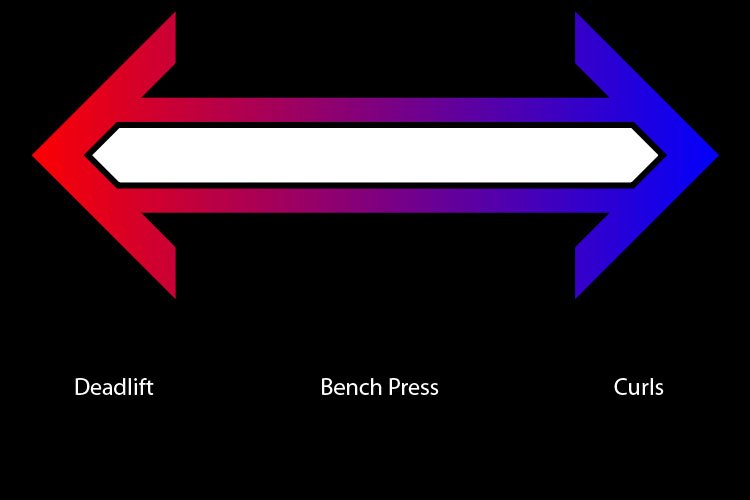Recovery From Training: Part Two

In Part One of this series, I talked about how recovery was portrayed under the generally-accepted principles of Hans Selye’s General Adaptation Syndrome framework. I also said:
…we’ll talk about the modalities of recovery and how it can carry over from one exercise to the next. Recovery is not a pitcher of liquid that you pour into various cups labeled with your bodyparts – it is far more complex than that.
As outlined in the last article, this concept is immediately apparent when you are training seriously – you squat on Monday, and on Tuesday you are going to have diminished strength/power as you recover from the stressor introduced on Monday – assuming that the effort on Monday was enough to produce a training stimulus. This is a good thing, of course. However, what is not immediately apparent are the factors that go into recovery. Generally, the more weight that you can lift and the more muscle groups involved in a movement, the greater the stress on the body and thus a longer period of depressed ability takes place.
This fairly simple concept illustrates why you can’t just deadlift for multiple reps every other day in the hopes of increasing your strength and power – the price your body pays in recovery is too great to keep up with such high frequency over a long duration of time.
Attenuation of Intensity for Intermediate Lifters
The topic of intensity modulation is something that I could write many hundreds of words on (and will do so in the future), but a quick overview here is necessary. Trainees in the novice stage of their development cycles can easily perform compound lifts on a regular basis without suffering the effects of systemic overtraining, but as they get stronger, this quick recovery ability starts to fade away. Many people on the Starting Strength program initially complain that their first few workout sessions are over too quickly and that they don’t feel like anything is getting done, but if they stick with it for a few months, they’ll be lucky to complete their workout in under 75 minutes despite the fact that it’s just three compound lifts (squat/bench/deadlift and squat/press/power clean, alternated).
Over time, the novice becomes an intermediate for his bodyweight/training level. This does not happen at a particular squat/deadlift/bench/press/clean total – this threshold is largely congenital in nature. The intermediate cannot adequately recover from squatting heavy three times per week and deadlifting every other workout day – he needs to attenuate the intensity through accessory lifts and modifications to the rep/set schemes for his lifts. Rather than trying to set a new 5RM (over three sets) every workout session, an intermediate lifter may switch to a program that has him squatting 5×5@85% on Monday (volume), 2×7@55% on Wednesday (recovery), and 1×5@95% on Friday (intensity). This template is used in the “Texas Method” intermediate program that many switch to after completing a basic program like Starting Strength. Or, a lifter may switch to Jim Wendler’s 5/3/1 program where he trains one lift per day, four days per week, but adds a lot of accessory/assistance lifts to those days like glute-ham raises on the squat day and dumbbell pullovers on the bench day.
The overall idea is to maintain a positive training stimulus, but spread out over a week rather than a single workout. Done correctly, this phase can last years – and for most casual lifters, their entire life.
Relating it to Baseball
Baseball pitching and hitting are largely ballistic/anaerobic sports that primarily require speed-strength in the best competitors. This means that anything that affects power development will also affect the abilities of a baseball player. The key to training in the weight room and for speed/agility while maintaining a good throwing program involves understanding what your body can and cannot adapt to – and this typically requires a fair amount of experimentation. Consolidating rapid elbow extension stress into a single workout is a good idea in an effort to try and modulate that particular stressor – so you might throw your max intensity bullpen before you throw medballs for volume and get a bench press workout in, for example. On days you do light throwing, you might try to get in heavy squat/deadlift worksets and vertical leap efforts – giving yourself time to recover before you throw maximum intensity long toss or start your weighted ball throwing program.
Hopefully this brief overview of recovery helps you to understand how to apply it in your workout routine and training program!

Comment section